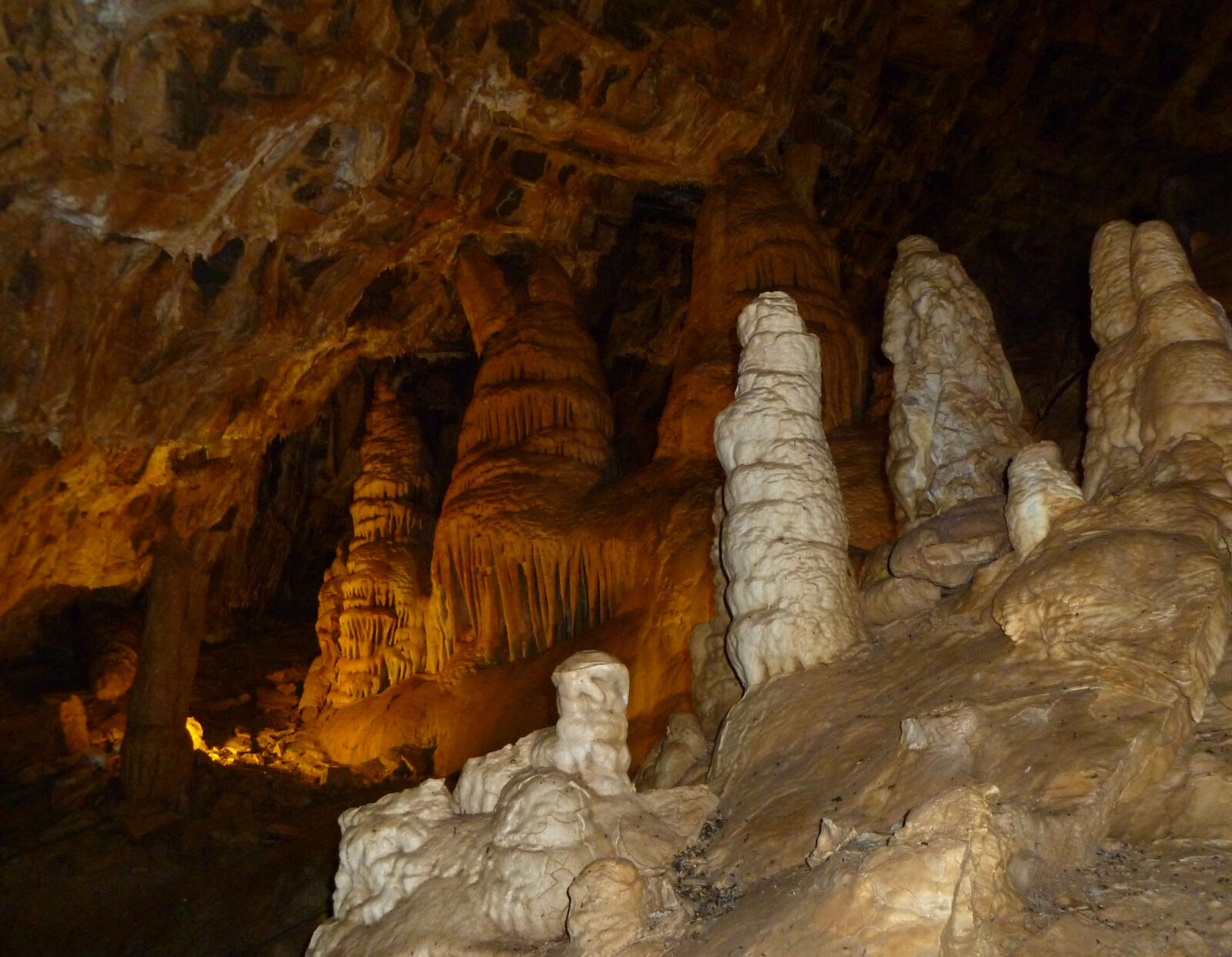Cave temperatures – which generally hover around the immediate area’s average annual temperature – feel wonderfully cool on a hot summer day.
And here’s another cool fact – aside from the deep sea, caves represent the last remaining unexplored frontier on Earth. New caves are discovered each year, and many known caves have yet to be fully surveyed or mapped.
Are you ready for your next adventure on your National Forests? Consider learning about caves and caving opportunities.
Caves and karst areas – topographic features formed when soluble rocks dissolve and characterized by underground drainage systems with caves and sinkholes – occur on more than 100 National Forests and Grasslands across the United States. Many of these caves contain unique biologic, geologic, hydrologic, cultural, paleontological, educational, scientific and recreational values.
Caves often provide habitat for threatened, endangered and other rare species, including some endemic microbial communities known to exist only in the cave where they are found and nowhere else. Many of the special values found in caves are “nonrenewable” – once they are damaged or destroyed they cannot be restored.
The USDA Forest Service Cave and Karst Program protects these special values where they exist. Forest Service geologists and cave specialists work with their colleagues to ensure that surface activities such as timber, minerals, grazing, transportation, and recreation management don’t inadvertently damage sensitive cave resources. The program also works with partners to explore, study, and restore caves and manages recreational use.
Visitors to caves should always strive to minimize the risk of causing irreversible impacts to cave resources. Some techniques to minimize impact include knowing and adhering to local regulations; never touching sensitive cave formations, wildlife, archaeological, or paleontological resources; having the appropriate experience and gear to safely navigate the cave you’re visiting; and always decontaminating footwear, clothing and caving gear to avoid accidentally transmitting white-nose syndrome, a fungus that has tragically killed millions of bats in North America, to another cave.
If you are new to caving consider visiting a “show cave” managed for general public visitation by the Forest Service, another public land management agency or a private owner. Show caves on National Forest System lands include Blanchard Springs Caverns in Arkansas, the Boulder Cave Trail in Washington and El Capitan Cave in Alaska.

Recreation use in many caves is authorized only on a case-by-case basis to protect sensitive cave resources and cavers. In addition to sensitive resources that require protection, caves may have deep, dark pits, vertical passages, slippery rocks and other hazards that call for proper caving experience, careful caving techniques and appropriate gear.
Or, if you really catch the caving bug and want to gain more experience with recreational caving, cave science and/or cave exploration, consider getting involved with your local Grotto or another cave conservation organization. Grottos are local or regional chapters affiliated with the National Speleological Society that may sponsor caving trips, offer caving training, teach and practice cave conservation and stewardship, and/or study caves in partnership with the Forest Service and other land managers.
Either way, get out there and (responsibly) check out a cool cave to enjoy another of the limitless adventures to be had on your National Forests!

